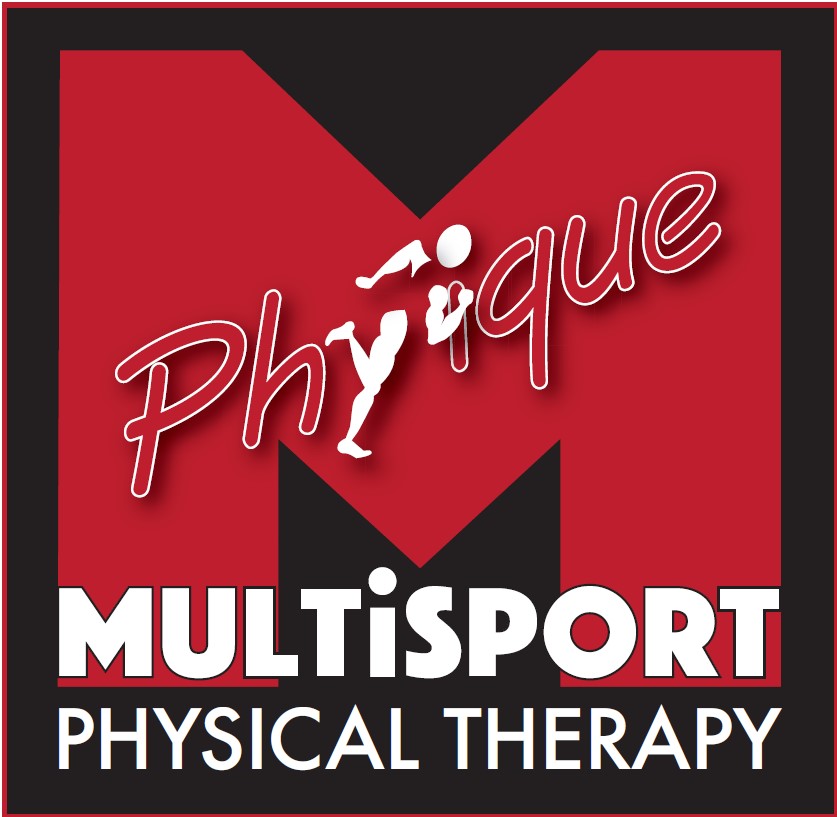John Hill

I had the chance recently to sit down and talk triathlon with TCSD Vice President, John Hill. Please join me as we get to know this great guy who has played a key role in making our club the best in the world.
Craig: What was your sports background before triathlon?
John: As a kid I wasn't a very good athlete so I didn't participate in too many sports for very long. In high school I did well academically but didn't do many extracurricular activities. My history teacher was also the cross country coach at the school. I felt comfortable with him as a teacher and still had a strong desire to participate in sports so I started running on my own during the summer after my junior year in hopes of joining the cross country team. Fortunately the team was composed of kids who all worked closely together and were very supportive of everyone. It was a struggle to just finish a workout with them at first, but soon it became easier. I think I often ran as fast in the workouts as I ran in races. This was my senior year in high school, so after the track season my short introduction to endurance sports looked to be over.
I had enjoyed competing so much that I really wanted to continue doing so in college. I went to Pomona College which is a small liberal arts college on the edge of Los Angeles County. Being small, and Division III, most of the sports teams were open to anyone. I tried running cross country my freshman year. I finished the season but the combination of daily 2nd degree smog alerts and a much more competitive atmosphere meant that I knew I wouldn't return for a second year. By this time I wasn't afraid to jump in over my head and was used to being at the back of the pack. I took a recreational swimming class my sophomore year. I enjoyed swimming, and like high school, I found a coach who was willing to push me even though I wasn't going to be a great swimmer. Penny Dean coached the women's swim team which was one of the top DIII programs in the nation. She was also a graduate of the school and had set the world record for crossing the English Channel. I didn't want to let her down so when she asked if I wanted to swim in the morning with the women's team I said sure. Going from a few hundred yards to an 8000 yard workout was probably a bit much at first, but I could struggle through in the slowest of slow lanes. After a few weeks I realized that I really wanted to compete but that swimming probably wasn't the best choice. I thought I'd try running track my last two years.
Penny asked me to come talk with her after one of the morning workouts and asked if I wanted to be the team manager. I enjoyed competing so I told her that I wanted to compete the next year rather than be manager. And that's when the miscommunication happened. I wasn't clear that I wanted to run track NOT swim. Before I could explain myself she had picked up the phone and called the coach of the men's swim team. She told him that I would be swimming with him next year. And that was that. Rather than explain the mix up I let it stand and thought I could clear things up later. But I never did, so within a few weeks I was a member of the men’s swim team as a Junior in college with no background in swimming. Worse still, everyone on the swim team was on the water polo team as well so you could participate in coached swim workouts during the fall season. I had never picked up a water polo ball - I had barely picked up a baseball by that point in my life. Pomona had a good water polo team and started the year off against teams like Stanford, Berkeley, and UC San Diego. Needless to say I didn't travel to any of those games or get within 100 yards of the pool. However, I did have to play in at least one game the coach thought, so when the Sagehens (yes, our mascot is a desert chicken) hosted the CalTech Beavers at our campus pool (which wasn't a "deep" pool for water polo) I sat on the bench ready to play. I was put in the game for about two minutes, did absolutely nothing useful, and spent the rest of the game trying to figure out the rules.
I swam for two years and managed to set a season or lifetime best at every meet I competed in. I definitely wasn't fast, but I did enjoy the experience immensely. It was really hard making it through the winter workouts where we'd do 6K yards in the morning and then 10K-12K in the afternoon. I swam breaststroke in the meets since we didn't have anyone else on the team who swam that stroke. In addition, I'd swim the 200IM and 100 and 200 free. You can only fall behind so much in those events. But I did manage to get my 200 free time to a respectable number and was allowed to swim on our B relay at the conference meet. We finished third. My senior year was also the year that the NCAA added a 200 medley relay for some meets. I was able to lead off breaststroke the first time the event was swam at the school, and technically, held the school record in the event for a few weeks. I made the coach put the record up on the board by the pool since I knew if he waited too long I wouldn't make it up there.
After college I taught at a prep school in Connecticut, Suffield Academy, for a few years and coached cross country, track (distance runners), and the JV swim team.
Craig: How did you find yourself becoming a triathlete?
John: In 1986 I competed in my first triathlon. It was a run, bike, swim event since the swim was in a pool. I think the distances were 5K, 15K, 200M. I enjoyed it, but I didn't really have a desire to do another one. After moving to San Diego and working for a few years I thought I should get off the couch and stop watching NASCAR every weekend. I thought I'd try to run a marathon - that seemed like a really difficult thing to do and I like challenges. I spent some time training for the Carlsbad Marathon and finished it in about 4 hours. Afterwards, it was a bit of a let down since there didn't seem to be a clear path of what to do next. I wasn't too interested in just running marathons. That's when I met someone at a local shoe store who told me about triathlons and TCSD. The Carlsbad Triathlon was coming up in a few weeks so I signed up. This was 1998. Even though I swam in a surfing wetsuit and rode an old Schwinn bike, I had a blast. I proceeded to sign up for 3 or 4 races right after that. By the time the Mission Bay Triathlon came around I knew this is what I wanted to do. I joined TCSD and signed up for Ironman Florida in 1999. I finished Florida, and even though I swore at the time I wouldn't do another Ironman, I finished Lake Placid in 2006 and am getting ready for Coeur d'Alene this year.
Craig: What roles have you held within the Tri Club?
John: When I first joined the club I would go to the meetings and the track workouts regularly. I'm quiet and shy so I didn't interact with too many people. Then one day I saw Jim McCann at the Post Office. He had a stack of newsletters to stamp and asked if I would help. I was surprised he recognized me from the track and I spent the next half hour stamping newsletters. That was about all I did volunteer-wise until I pestered Dean Rosenberg into letting me put together a Classified Ad application for the club's website. I had recently sold my software company and was working from home as a consultant. I thought it would be something useful and I wanted to become a part of the organization. I did that, and in my mind, it has become one of the more successful parts of the website. Dean was looking for someone to take over the website and asked if I would do it. I said yes. But in all honesty, I didn't do much on the website at that time. Lynn Trimble did a huge amount of work to keep the site up to date and was really the "webmaster" for much of that time.
Since I had joined the club we had never had anything except cycling gear and tri gear available for sale. I wanted a sweatshirt with the club's logo and thought our growing membership would want them as well. I told Jim I'd buy the shirts and the club could pay me back as they were sold so it wouldn't be a big expense. I did that and put together the online store on the website to sell the gear. What I didn't realize at the time was that selling the gear meant I had to pack and ship the gear as well. It also meant that I eventually had inventory of all our cycling and tri gear so we could sell that in the store as well. I really didn't participate too heavily until Brian Long stepped into the president's role. He was the perfect person to take over but I felt a bit bad since I knew he was starting from scratch. He and I were friends since he hauled the gear around to the meetings and we'd get together so I could replenish inventory every so often. I knew that I wanted to be much more active to help move things forward.
After Dave Huff resigned as Vice President, Brian asked if I'd step in and I did. That was about 2 years ago. Since then I've added the race timing, chip management, membership card printing and website maintenance to that job. My goal this year is to start unloading these tasks.
Craig: How do you suggest that people get involved in the Tri Club?
John: There really isn't a clear answer as to the best way to get involved in the club. Certainly walking up and asking if anyone needs help at an event is the easiest way. I think we sometimes take the volunteer nature of the club for granted but there are many members who are new or don't participate in too many events and don't realize that everything we do is run by volunteers. The volunteers don't necessarily sign up ahead of time - everyone just shows up and starts working. Beyond that I think it's important for people to realize that everyone's time is limited. As a result the people who are proactive and able to accept responsibility are always in demand.
Craig: A lot goes into putting on our Club races. In my 20+ years of membership, I'm sure I've raced over 100 Club races. I really appreciate all that our volunteers do for us. What would you like to share with our members about putting on a Club race that most people would not know?
John: Club races are big events and require a large amount of work. They are real races and I think everyone that participates in them would agree that they have real value. I'm sure I speak for everyone involved in the races when I say that our goal is to not just equal but to exceed what is available at other local "paid" races. It would take many pages to accurately explain how much work goes into each race. Brian Wrona, Ann Kelly, Dawn Copenhaver, and all the volunteers necessary for registration, setup, teardown, photographs, etc. make a huge donation to the club with every race. Lynn Trimble was the person that started the club down the path to electronic timing by organizing the system based on the Palm PDAs. This was far more accurate than writing things down by hand, but still required a lot of volunteers and required a lot of manual work to merge the timing data with the paper registration sheets. He looked into chip timing but it was a huge expense and the club never had the funds available to make that purchase.
With our current timing system I need to build chip packages a few days before the race so that people who have purchased their chips online can pick them up at the registration table. This involves scanning each chip, numbering it, entering it in our chip database and then adding it to the package that's given out at the race. The day before the race all the equipment has to be unpacked and charged. The three timing boxes, battery for the clock, laptop, printer and video camera all need to have their batteries charged. After it's charged everything is packed in the car. The amount of equipment has grown quite a bit and amounts to a few hundred pounds of gear that's separate from the race equipment. The evening before the race all the registration sheets are printed out so that they're ready for the next morning. At the race everything is unpacked, set up, torn down and packed. There's a lot of packing and unpacking of the equipment. After the race all the timing mats need to be unpacked and spread out so that they can be swept and dried. It takes 6-8 hours for the wet mats to dry. After that they are packed again and stored until the next race.
This is a lot of work, but it has reduced the number of volunteers necessary for timing while increasing the accuracy and timeliness of the results. At many races it's possible to set up the equipment, participate in the race, then break it all down. A by-product of the timing system is the ability to automatically cut up the video segments for each finisher and have those available in the results as well.
Craig: Your children have gotten involved in triathlon. How did your kids get turned on to do this sport?
John: My older son really enjoys the club. It's a friendly and unique environment. I think he enjoys participating in something that isn't done by all the other kids at school. Little League, soccer, and other team sports become very competitive at a very young age. In triathlon you don't have to compare yourself to everyone else - you can just monitor your own progress and enjoy the sport. I'm glad Andy Concors has been coordinating the kids program for the club. I think that program will really blossom once we start to get a good core group of kids who enjoy the sport.
Craig: You and Brian Long are putting on the Tiki Swim event. What is that event and how can people enter?
John: The Tiki Swim was an idea that Brian Long had as the first leg of an Ironman distance race that's broken up into three individual races spaced 4-6 weeks apart. There are plenty of century bike rides and marathons, but few if any open water swims at the 1.2 and 2.4 mile distance. He proposed the swim to the Oceanside Chamber of Commerce as part of their Harbor Days celebration and they thought it was a good idea. The swim will start at the Oceanside Pier and go back along the coast to the harbor. It will finish at the boat ramp where the Ironman California swim finishes. Going in that direction, the swimmers will benefit from the tide going in their direction. The 1.2 mile swim will start north of the Pier.
Besides offering a place for triathletes and open water swimmers to compete together, this race will be the first leg of TriFuzion - the virtual triathlon. I think TriFuzion will be a great way for a triathlete to finish their first Ironman distance race without having to do all the training necessary to finish it in one day. As a stepping stone to a one day event it will be beneficial, but it will also be popular among people trying to assess their best possible time for all three events.
Craig: Imagine that you are in your rocking chair reminiscing about the Tri Club. What are some memories that give you the most pride in being a TCSD member?
John: There are quite a few events that stand out in my mind. Some of which will probably be coming up in the next year. However, the first few years of the La Jolla Aquathlon's always bring up happy memories. Being able to race in the evening, then eat and watch the sunset, made those races nearly perfect. Particularly when my kids came and were able to play in the sand.
Craig: What is your favorite benefit of your TCSD membership?
John: The easy answer here is that I enjoy all the support and work provided by the volunteers. We have such a great resource at our disposal - whether it's workouts, meetings, volunteering at events, or just helping find a good plumber, our members allow us to do almost anything.
Craig: What do you do for a living?
John: I am a software engineer. I currently own my own consulting business where I develop back office and web applications for small and medium sized businesses. I enjoy the flexibility of my job so I can do as many things with my kids as possible.
Craig: What are your goals for 2011 and beyond?
John: My personal goal this year is to find the time to train for Ironman Coeur d'Alene, and possibly qualify for the USAT Age Group championships in Vermont. After that it's helping the club get involved in some bigger events and work with Brian Long on the Tiki Swim and TriFuzion. When I volunteered in Kona at the World Championships a few years ago I mentioned to someone that I enjoyed the event so much that I'd like to have a business reason to stay involved in triathlon and travel to more races. But that's a much longer term goal.
Craig: John, thank you so much for taking the time to share your story and for all you have done for the TCSD. You are a role model for all of us on how to be a leader in the community and most importantly an involved father in your son’s lives. Good luck on achieving your goals. I know you will meet and exceed those goals in record time.
Craig Zelent is a USA Triathlon Level 1 Certified Coach. Craig can be reached at 760-214-0055 or tricraigz@yahoo.com.








